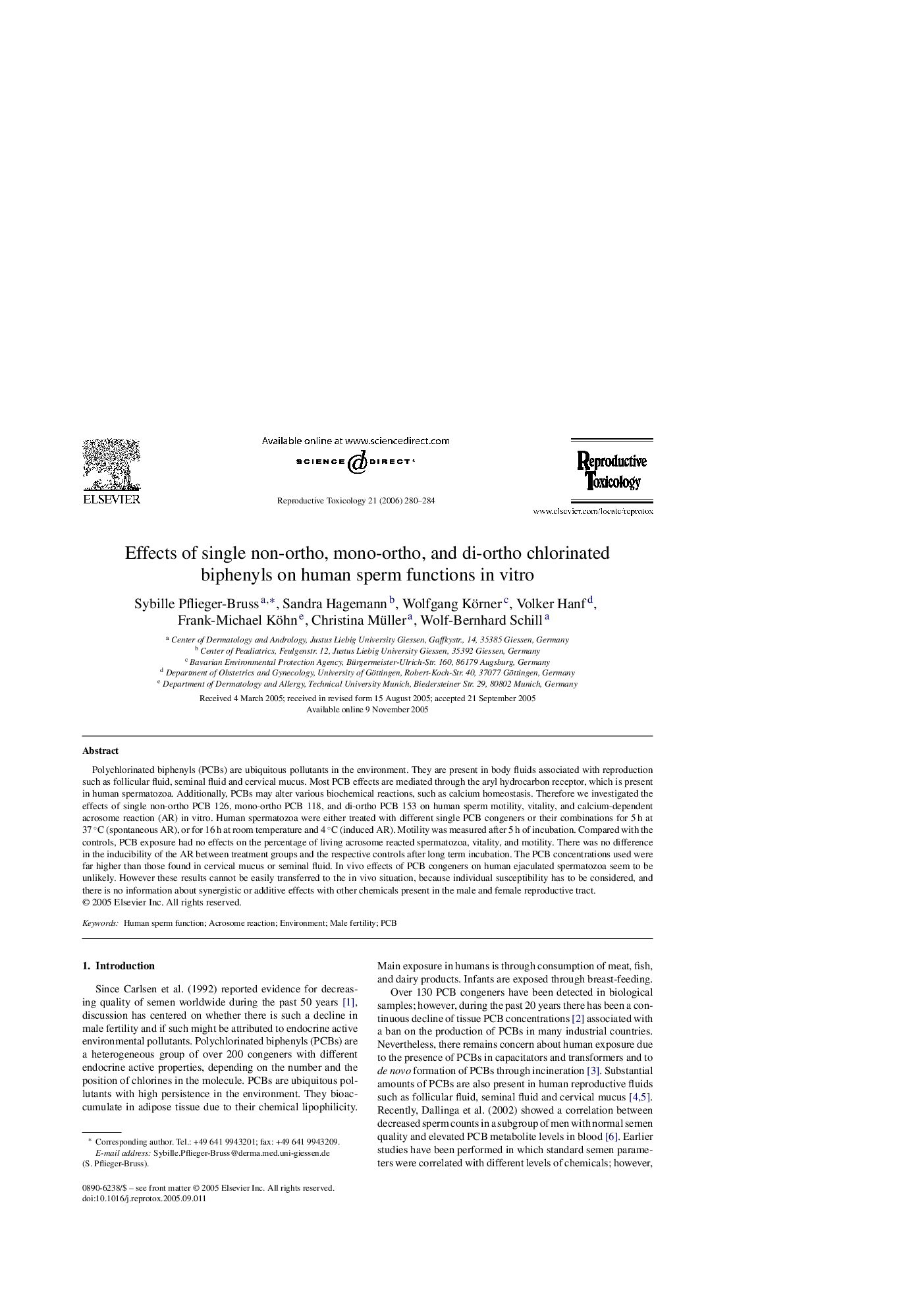| کد مقاله | کد نشریه | سال انتشار | مقاله انگلیسی | نسخه تمام متن |
|---|---|---|---|---|
| 2595380 | 1132320 | 2006 | 5 صفحه PDF | دانلود رایگان |

Polychlorinated biphenyls (PCBs) are ubiquitous pollutants in the environment. They are present in body fluids associated with reproduction such as follicular fluid, seminal fluid and cervical mucus. Most PCB effects are mediated through the aryl hydrocarbon receptor, which is present in human spermatozoa. Additionally, PCBs may alter various biochemical reactions, such as calcium homeostasis. Therefore we investigated the effects of single non-ortho PCB 126, mono-ortho PCB 118, and di-ortho PCB 153 on human sperm motility, vitality, and calcium-dependent acrosome reaction (AR) in vitro. Human spermatozoa were either treated with different single PCB congeners or their combinations for 5 h at 37 °C (spontaneous AR), or for 16 h at room temperature and 4 °C (induced AR). Motility was measured after 5 h of incubation. Compared with the controls, PCB exposure had no effects on the percentage of living acrosome reacted spermatozoa, vitality, and motility. There was no difference in the inducibility of the AR between treatment groups and the respective controls after long term incubation. The PCB concentrations used were far higher than those found in cervical mucus or seminal fluid. In vivo effects of PCB congeners on human ejaculated spermatozoa seem to be unlikely. However these results cannot be easily transferred to the in vivo situation, because individual susceptibility has to be considered, and there is no information about synergistic or additive effects with other chemicals present in the male and female reproductive tract.
Journal: Reproductive Toxicology - Volume 21, Issue 3, April 2006, Pages 280–284